
Discover the Heartbeat of Guadalajara: Zona Centro
Explore Zona Centro, the cultural and historical epicenter of Guadalajara, where colonial charm meets modern vibrancy, offering a rich tapestry of sights, sounds, and flavors.
Zona Centro is the vibrant and historical heart of Guadalajara, Mexico. This bustling neighborhood is a treasure trove of culture, history, and architectural wonders. As you stroll through its charming streets, you'll encounter colonial-era buildings, grand plazas, and intricate cathedrals that tell the story of this city's rich past. The neighborhood is home to iconic landmarks like the Guadalajara Cathedral, which stands majestically with its twin spires. Nearby, the Plaza de Armas offers a perfect spot to relax and people-watch, surrounded by lush gardens and stately monuments. Don't miss the Rotonda de los Jaliscienses Ilustres, a monument honoring the state's most distinguished figures. Art enthusiasts will find delight in the Hospicio Cabañas, a UNESCO World Heritage site that houses stunning murals by José Clemente Orozco. The Mercado San Juan de Dios, one of the largest indoor markets in Latin America, is a haven for shoppers looking for local crafts, textiles, and delicious street food. Whether you're savoring a traditional torta ahogada or exploring the vibrant murals, Zona Centro offers a unique blend of the old and new, making it a must-visit for any traveler.
Local tips in Zona Centro
- Wear comfortable shoes; the cobblestone streets can be uneven.
- Visit early in the morning to avoid crowds at popular landmarks.
- Carry cash for small purchases, as some vendors in the markets may not accept cards.
- Try the local delicacy, torta ahogada, at Mercado San Juan de Dios.
- Use sunscreen and stay hydrated, especially when exploring outdoor areas.
Discover the Heartbeat of Guadalajara: Zona Centro
Zona Centro is the vibrant and historical heart of Guadalajara, Mexico. This bustling neighborhood is a treasure trove of culture, history, and architectural wonders. As you stroll through its charming streets, you'll encounter colonial-era buildings, grand plazas, and intricate cathedrals that tell the story of this city's rich past. The neighborhood is home to iconic landmarks like the Guadalajara Cathedral, which stands majestically with its twin spires. Nearby, the Plaza de Armas offers a perfect spot to relax and people-watch, surrounded by lush gardens and stately monuments. Don't miss the Rotonda de los Jaliscienses Ilustres, a monument honoring the state's most distinguished figures. Art enthusiasts will find delight in the Hospicio Cabañas, a UNESCO World Heritage site that houses stunning murals by José Clemente Orozco. The Mercado San Juan de Dios, one of the largest indoor markets in Latin America, is a haven for shoppers looking for local crafts, textiles, and delicious street food. Whether you're savoring a traditional torta ahogada or exploring the vibrant murals, Zona Centro offers a unique blend of the old and new, making it a must-visit for any traveler.
Iconic landmarks you can’t miss
Guadalajara Cathedral
Discover the stunning Guadalajara Cathedral, an architectural gem blending history, spirituality, and vibrant culture in the heart of Guadalajara.

Plaza de la Liberación
Discover the historic charm and vibrant culture of Plaza de la Liberación, the heart of Guadalajara where history and community come alive.
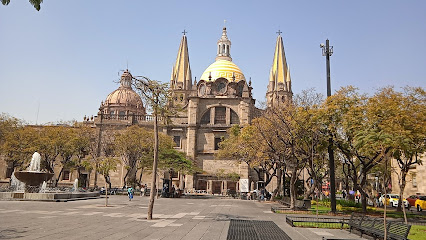
Rotonda de los Jaliscienses Ilustres
Explore the Rotonda de los Jaliscienses Ilustres in Guadalajara, where history and beauty unite in a serene park setting filled with remarkable monuments.

Plaza de Armas
Experience the charm of Guadalajara at Plaza de Armas, a historic park surrounded by stunning architecture and vibrant local culture.

Centro Histórico de Guadalajara
Discover the rich history and vibrant culture of Guadalajara's Centro Histórico, a UNESCO World Heritage site filled with stunning architecture and lively markets.

Centro de Guadalajara
Discover the vibrant history and culture of Guadalajara at Centro de Guadalajara, a stunning landmark filled with architectural beauty and lively atmosphere.

Monument to the Centennial of Independence
Explore the Monument to the Centennial of Independence in Guadalajara, a stunning symbol of Mexico's rich heritage and history.

Fuente de Guadalajara
Explore the stunning Fuente de Guadalajara, a captivating fountain that embodies the charm and culture of Mexico's picturesque city.

Cabeza de Quetzalcóatl
Explore the Cabeza de Quetzalcóatl in Guadalajara, a stunning historical landmark symbolizing Mesoamerican culture and ancient artistry.

Antiguo Ex Congreso del Estado de Jalisco
Explore the Antiguo Ex Congreso del Estado de Jalisco, a historical landmark in Guadalajara showcasing stunning architecture and rich cultural heritage.

Unmissable attractions to see
Guadalajara Cathedral
Discover the architectural beauty and rich history of Guadalajara Cathedral, a must-see landmark in the heart of Guadalajara, Jalisco.

Plaza Tapatía
Discover Plaza Tapatía in Guadalajara, a cultural hub featuring stunning architecture, vibrant gardens, and lively local events in the heart of the city.

Regional Museum of Guadalajara
Explore the rich cultural heritage of Jalisco at the Regional Museum of Guadalajara, featuring diverse collections from pre-Hispanic artifacts to contemporary art.

Museo de la Ciudad de Guadalajara
Discover the captivating history of Guadalajara at Museo de la Ciudad de Guadalajara, a local history museum with fascinating exhibits and stunning architecture.
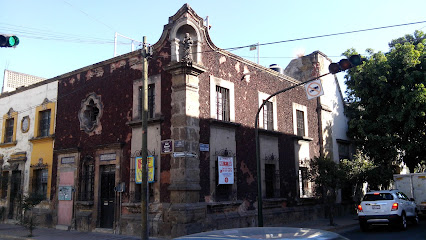
Essential places to dine
La Chata de Guadalajara
Experience authentic Mexican breakfast at La Chata de Guadalajara - a local favorite serving delicious dishes in a vibrant atmosphere.

Restaurantes La Gorda · Centro
Experience the heart of Guadalajara with delicious authentic Mexican dishes at Restaurantes La Gorda in Centro.

La Época de Oro
Discover La Época de Oro: A premier grill and Mexican restaurant in Guadalajara offering authentic flavors and unforgettable dining experiences.

Restaurant Las Sombrillas
Discover the vibrant flavors of Mexico at Restaurant Las Sombrillas in Guadalajara's Zona Centro - where every meal is a celebration.

Piso Siete Restaurante Bar
Experience authentic Mexican flavors at Piso Siete Restaurante Bar in Guadalajara's historic Zona Centro.

Restaurant La Antigua
Savor authentic Mexican cuisine at Restaurant La Antigua—where traditional flavors meet modern flair in the heart of Guadalajara.

La Fonda de la Noche
Discover authentic Mexican cuisine at La Fonda de la Noche in Guadalajara - where every meal tells a story of tradition and flavor.

Restaurante Los Ilustres
Discover authentic Mexican flavors at Restaurante Los Ilustres in Guadalajara – where tradition meets modern cuisine.

La Pava, cocina tradicional
Discover authentic Mexican flavors at La Pava in Guadalajara, where tradition meets deliciousness in every dish.

Restaurant los arcos
Discover authentic Mexican cuisine at Restaurant Los Arcos in Guadalajara's vibrant Zona Centro, where tradition meets flavor.

Markets, malls and hidden boutiques
FrikiPlaza
Discover a shopping paradise at FrikiPlaza, where fashion meets culture in the heart of Guadalajara, offering unique finds and vibrant local experiences.

Jk Store Gdl
Explore Jk Store Gdl for authentic souvenirs showcasing the vibrant culture and craftsmanship of Guadalajara, perfect for every traveler.

Bazaar Plaza Centro
Explore Bazaar Plaza Centro in Guadalajara – a vibrant shopping haven filled with local crafts, delicious cuisine, and cultural experiences.

Pinku Store
Explore Pinku Store in Guadalajara for unique souvenirs and gifts, showcasing the vibrant culture and artistry of Mexico.

Boutique 99
Explore the chic elegance of Boutique 99, a unique women's clothing store in Guadalajara's vibrant Zona Centro, perfect for fashion enthusiasts.

EncuadrArte
Discover the charm of Mexican artistry at EncuadrArte, a unique gift shop in Guadalajara specializing in artistic handicrafts and local treasures.

Axolotienda
Explore Axolotienda in Guadalajara for unique gifts and local crafts that embody the spirit of Mexican culture and creativity.

NOVEDADES LUX
Discover unique souvenirs and local crafts at Novedades Lux, a charming gift shop in Guadalajara's vibrant Zona Centro.

Lexi Boutique Centro
Explore Lexi Boutique Centro in Guadalajara for a unique shopping experience showcasing local and contemporary women's fashion.

Candy's Boutique
Discover unique fashion at Candy's Boutique in Guadalajara's Zona Centro, where style meets local culture in every piece.

Essential bars & hidden hideouts
La Occidental Cantina
Experience the vibrant nightlife at La Occidental Cantina, a beloved bar in Guadalajara offering delicious drinks and a lively atmosphere.
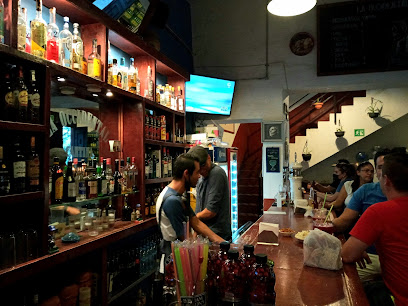
Escarabajo Scratch
Experience the vibrant nightlife and local flavors at Escarabajo Scratch, a must-visit bar and restaurant in Guadalajara's bustling Zona Centro.

K-trina cantina centro
Discover K-trina Cantina Centro, a vibrant bar in Guadalajara's Zona Centro, offering a lively atmosphere, delicious drinks, and unforgettable nightlife.

Bar Gil
Experience the vibrant nightlife of Guadalajara at Bar Gil, where great drinks and a lively atmosphere await you.

Hungla Jungla Bar
Discover the lively ambiance of Hungla Jungla Bar in Guadalajara, where delicious drinks and vibrant music create unforgettable nights.

Green Light
Discover the vibrant nightlife at Green Light, a welcoming gay bar in Guadalajara offering great drinks, lively entertainment, and a friendly atmosphere.

La Gozadera | Antro, Bar.Guadalajara
Discover the vibrant nightlife of Guadalajara at La Gozadera, where affordable drinks and lively music create an unforgettable experience.

California's bar
Experience the vibrant nightlife at California's Bar, a premier gay bar in Guadalajara, offering music, drinks, and inclusivity.
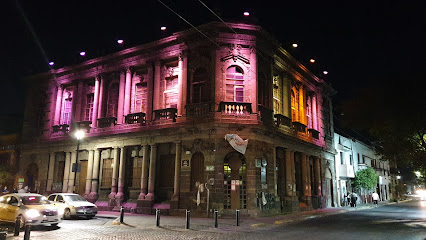
Calipso Bar
Discover the vibrant nightlife at Calipso Bar in Guadalajara, where great drinks and an energetic atmosphere create unforgettable experiences.
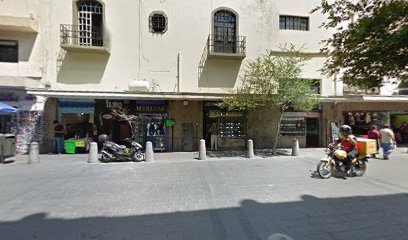
Bar El Flaco de Oro
Experience the vibrant nightlife at Bar El Flaco de Oro, where authentic Mexican flavors and lively atmosphere await in Guadalajara's heart.

Local Phrases
-
- HelloHola
[oh-lah] - GoodbyeAdiós
[ah-dee-ohs] - YesSí
[see] - NoNo
[noh] - Please/You're welcomePor favor/De nada
[por fah-vor/deh nah-dah] - Thank youGracias
[grah-see-ahs] - Excuse me/SorryPerdón/Lo siento
[pehr-dohn/loh see-ehn-toh] - How are you?¿Cómo estás?
[koh-moh ehs-tahs] - Fine. And you?Bien. ¿Y tú?
[bee-ehn. ee too] - Do you speak English?¿Hablas inglés?
[ah-blahs een-glehs] - I don't understandNo entiendo
[noh ehn-tee-ehn-doh]
- HelloHola
-
- I'd like to see the menu, pleaseMe gustaría ver el menú, por favor
[meh goos-tah-ree-ah behr ehl meh-noo, por fah-vor] - I don't eat meatNo como carne
[noh koh-moh kahr-neh] - Cheers!¡Salud!
[sah-lood] - I would like to pay, pleaseMe gustaría pagar, por favor
[meh goos-tah-ree-ah pah-gahr, por fah-vor]
- I'd like to see the menu, pleaseMe gustaría ver el menú, por favor
-
- Help!¡Ayuda!
[ah-yoo-dah] - Go away!¡Vete!
[veh-teh] - Call the Police!¡Llama a la policía!
[yah-mah ah lah poh-lee-see-ah] - Call a doctor!¡Llama a un médico!
[yah-mah ah oon meh-dee-koh] - I'm lostEstoy perdido
[ehs-toy pehr-dee-doh] - I'm illEstoy enfermo
[ehs-toy ehn-fehr-moh]
- Help!¡Ayuda!
-
- I'd like to buy...Me gustaría comprar...
[meh goos-tah-ree-ah kohm-prahr...] - I'm just lookingSolo estoy viendo
[soh-loh ehs-toy vee-ehn-doh] - How much is it?¿Cuánto cuesta?
[kwan-toh kwehs-tah] - That's too expensiveEso es muy caro
[eh-soh ehs mwee kah-roh] - Can you lower the price?¿Puedes bajar el precio?
[pweh-dehs bah-hahr ehl preh-syoh]
- I'd like to buy...Me gustaría comprar...
-
- What time is it?¿Qué hora es?
[keh o-rah ehs] - It's one o'clockEs la una
[ehs lah oo-nah] - Half past (10)Diez y media
[dyehs ee meh-dee-ah] - MorningMañana
[mah-nyah-nah] - AfternoonTarde
[tahr-deh] - EveningNoche
[noh-cheh] - YesterdayAyer
[ah-yehr] - TodayHoy
[oy] - TomorrowMañana
[mah-nyah-nah] - 1Uno
[oo-noh] - 2Dos
[dohs] - 3Tres
[trehs] - 4Cuatro
[kwah-troh] - 5Cinco
[seen-koh] - 6Seis
[says] - 7Siete
[syeh-teh] - 8Ocho
[oh-choh] - 9Nueve
[nweh-veh] - 10Diez
[dyehs]
- What time is it?¿Qué hora es?
-
- Where's a/the...?¿Dónde está...?
[dohn-deh ehs-tah] - What's the address?¿Cuál es la dirección?
[kwal ehs lah dee-rehk-syon] - Can you show me (on the map)?¿Me puedes mostrar (en el mapa)?
[meh pweh-dehs mohs-trahr (ehn ehl mah-pah)] - When's the next (bus)?¿Cuándo es el próximo (autobús)?
[kwan-doh ehs ehl proh-ksee-moh (ow-toh-boos)] - A ticket (to ....)Un boleto (a ....)
[oon boh-leh-toh (ah)]
- Where's a/the...?¿Dónde está...?
History of Zona Centro
-
Guadalajara, founded in 1542 by Cristóbal de Oñate, was established in the region known as the Valley of Atemajac. Zona Centro, the heart of Guadalajara, was designed with a central plaza, which became the focal point for the colonial administration and the Catholic Church. The architecture from this period, including the Cathedral and surrounding colonial buildings, reflects the Spanish influence and the city’s development as a key administrative center in New Spain.
-
During the early 19th century, Guadalajara emerged as an important site in the Mexican War of Independence (1810-1821). The city became a stronghold for insurgent leaders like Miguel Hidalgo and José María Morelos. Zona Centro witnessed several key events, including the proclamation of independence in its main square, which would later shape the city’s political landscape.
-
The late 19th and early 20th centuries marked a period of industrial growth for Guadalajara. Zona Centro evolved with the establishment of new businesses and railroads, facilitating commerce and migration. The introduction of electric trams and the expansion of public services transformed the urban fabric, making the area a bustling hub of activity and a center for cultural and economic exchange.
-
The Mexican Revolution (1910-1920) had a profound impact on Guadalajara, with Zona Centro playing a critical role in the revolutionary efforts. The city became a base for various factions, and many significant battles occurred in and around the central area. This period led to social reforms that reshaped land ownership and urban planning in Guadalajara.
-
In the latter half of the 20th century, Zona Centro underwent a cultural renaissance. The establishment of cultural institutions, such as museums and galleries, along with the preservation of historic buildings, cemented its status as a cultural epicenter. Festivals like the Guadalajara International Book Fair and the Encuentro Internacional del Mariachi have turned the area into a vibrant showcase of Mexican culture.
Zona Centro Essentials
-
Zona Centro is easily accessible from various neighborhoods in Guadalajara. If you're coming from the airport, take a taxi or an Uber, which should take around 30 minutes. From other neighborhoods, the light rail (Tren Ligero) connects Zona Centro, with stops at key locations like Plaza de Armas and Mercado San Juan de Dios. Buses are also available, but routes may vary, so it's advisable to check local schedules.
-
Zona Centro is best explored on foot due to its compact size and vibrant street life. The area is well-serviced by public transport, including the light rail and numerous buses. Bicycles can be rented through local bike-sharing programs, and taxis or rideshare services are readily available for longer distances or late-night travel.
-
While Zona Centro is generally safe for tourists, it's advisable to remain vigilant, especially in crowded areas. Certain neighborhoods on the outskirts, such as some parts of San Juan de Dios, may have higher crime rates. Avoid displaying valuable items and consider using a money belt. Always stay alert and trust your instincts.
-
In case of an emergency, dial 911 for police, fire, or medical assistance. For medical emergencies, several hospitals are located within Zona Centro. It's recommended to have travel insurance that covers medical emergencies. Pharmacies are available for minor health issues, and many can provide over-the-counter medications.
-
Fashion: Do wear comfortable and modest clothing, especially when visiting religious sites. Don't wear revealing outfits. Religion: Do respect local customs and be quiet in places of worship. Public Transport: Do be courteous and allow elderly passengers to sit. Don't eat or drink on public transport. Greetings: Do greet locals with a friendly handshake. Don't assume familiarity; use formal greetings initially. Eating & Drinking: Do try local foods and drinks, and accept offers of hospitality. Don't waste food or drink excessively, as it may be seen as disrespectful.
-
To experience Zona Centro like a local, visit local markets such as Mercado San Juan de Dios for fresh produce and traditional crafts. Engage with street vendors and try the local street food, which is often delicious and affordable. Attend local events or festivals if your visit coincides with them, as they provide a rich insight into the culture. Consider exploring the historic architecture and art galleries to appreciate the area’s rich cultural heritage.
Trending Landmarks in Zona Centro
Nearby Cities to Zona Centro
-
Things To Do in Puerto Vallarta
-
Things To Do in Guanajuato
-
Things To Do in San Miguel de Allende
-
Things To Do in Queretaro
-
Things To Do in Ixtapa-Zihuatanejo
-
Things To Do in Taxco
-
Things To Do in Mexico City
-
Things To Do in Acapulco
-
Things To Do in Puebla
-
Things To Do in Monterrey
-
Things To Do in Cabo San Lucas
-
Things To Do in Veracruz
-
Things To Do in Oaxaca
-
Things To Do in McAllen
-
Things To Do in Matamoros













